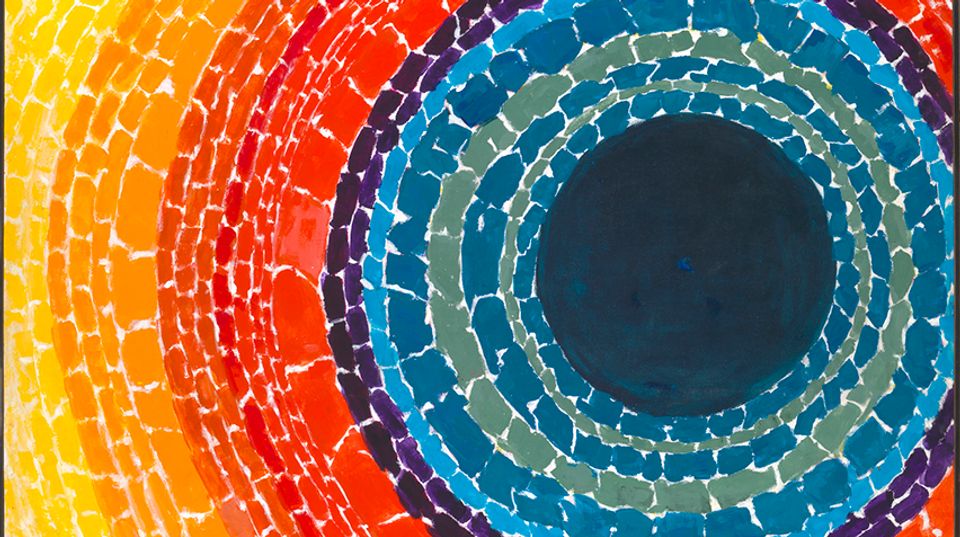

As a visual for our film series Movies at SAAM, we've been using Xavier Barile's 42nd Street Nocturne. But did you know this painting hangs in the Luce Foundation Center? Situated in case 36B, Barile's small impressionistic painting shows New York City's 42nd Street Apollo Theatre aglow beneath a starry sky. Not only does this piece exemplify mid-20th-century American art, but it touches on key themes found within the history of film.
Barile's painting depicts moviegoers filtering in and out of the theater, which advertises the 1953 film, The Moon is Blue, directed by Otto Preminger. The subject of the film, a young naïve woman seduced by a playboy architect, was radical for its time. The Moon is Blue made headlines for its refusal to conform to the strict censorship of the Motion Picture Production Code adopted as a standard in 1930. The film was criticized for using words like virgin, seduce, and pregnant. One woman wrote The New York Times describing the film as, "amoral, distasteful and flagrantly suggestive." Despite the film's indelicate connotations, it was a hit. In fact, the Times reported people were going back to see the movie two or three times.
Not only did this film push societal limits, but Barile's modernist and romantic style also pushed Americans' understanding of good art. As part of the Ashcan School, Barile focused on representing everyday scenes of society and culture and his work showed that ordinary streets and people can be beautiful.
Whether on canvas or on film, pushing boundaries is an important character in the history of art. Check out the calendar for the next Movies at SAAM to see what other relevant art subjects we explore! Next up: this Saturday, May 13, May 13, Hockney, a 2014 documentary by Randall Wright about the artist David Hockney. Show starts at 3 p.m. in the museum's McEvoy Auditorium.



















